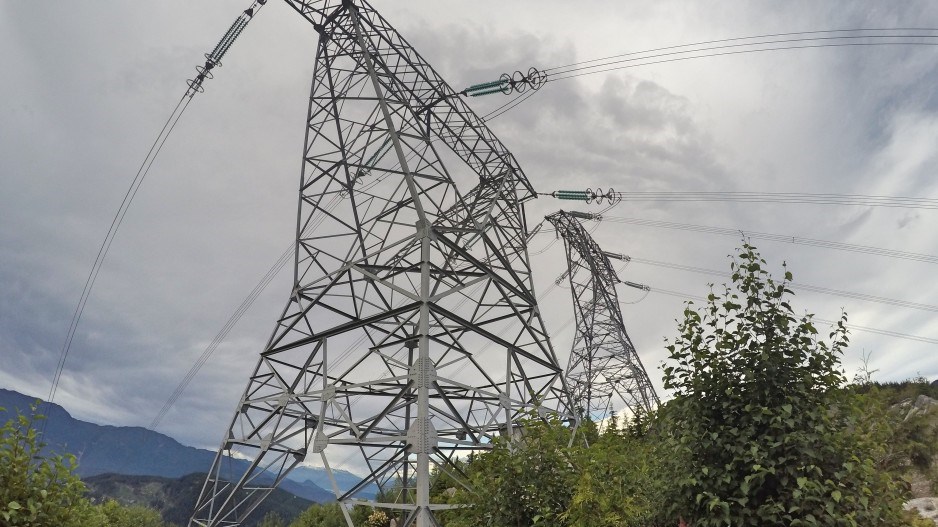(Correction: This story has been corrected. The original version attributed comments about zero-carbon pilot projects to Keith Sones, vice-president of national business development for Valard Group. It was, in fact, Chris Bataille of the Deep Carbonisation Project who spoke about those projects. Also, deputy minister of Energy Dave Nikolejsin calculated B.C.'s power needs at 10,000 gigawatts. Government communications has confirmed that Nikolejsin meant to say 10,000 gigawatt hours.)
Judging by comments made last week by B.C.’s deputy minister of energy, mines and petroleum resources, the BC Utilities Commission (BCUC) might have underestimated B.C.’s future demand for power.
The BCUC’s final report, which assumes a low load forecast, has been seized upon by opponents of Site C as confirmation the proposed $9 billion hydroelectric dam is not needed. It likewise suggests new wind and geothermal power projects aren’t needed either.
But speaking at Clean Energy BC’s Generate 2017 conference last week, Dave Nikolejsin estimated that B.C.’s power demand will grow by 10,000 gigawatts by 2050. (Nikolejsin meant to say 10,000 gigawatts hours (GWh), a government spokesperson confirmed. Site C dam would have an annual output of 5,100 GWh.)
A big driver will be municipal, provincial and federal climate change strategies, which, if implemented and adhered to, would mean a growing demand for clean power, as buildings, transportation and heavy industry switch from fossil fuels to clean electricity.
“If you believe this and you buy into it, and you support it and you don’t believe the electricity load is going to grow, I don’t see how you reconcile those two things,” Nikolejsin said.
Presuming the status quo, B.C.’s demand for power would grow by 4% by 2030, Michael Wolinetz, a partner at Navius Research, told conference attendees.
The forecast changes, however, if one presumes carbon taxes will rise to $100 per tonne by 2030, that other policies will be acted on, such as zero-emission strategies for vehicles and buildings, and that heavy industry will transition away from fossil fuels.
About half of future load growth would come from increased electrification of buildings and transportation. A big question is what happens within heavy industry, which potentially could drive an equal growth in demand.
Nikolejsin noted that his boss, Energy, Mines and Petroleum Resources Minister Michelle Mungall, has a mandate that includes creating an “energy road map,” a key part of which will be electrification.
The federal government has a greenhouse gas reduction target of 30% below 2005 levels by 2030, and B.C. is targeting an 80% reduction by 2050. Meanwhile the City of Vancouver aims to be 100% renewable by 2050.
One new demand for power is expected from wider adoption of clean-energy vehicles (CEVs) powered by plug-in battery, hybrid engine or hydrogen fuel cell.
“We want to see about 300,000 CEVs on our roads by 2030,” Nikolejsin said.
But even if adoption of electric vehicles were to hit 450,000 by 2030, B.C.’s power demand would increase by only 800 gigawatt hours per year, according to Wolinetz. That’s about one-sixth the amount of energy that Site C would produce in a year.
Wolinetz said even if transportation becomes “highly electrified” by 2050, CEVs will still represent only 5% of the overall power demand.
But there could be significant demands for power elsewhere, from greater electrification in sectors such as ports, freight carriers, mines and the natural gas industry.
The biggest demand in B.C. would likely come from electrifying northeastern B.C.’s natural gas industry. The challenge there is that natural gas is so cheap, while switching to electricity requires a big investment from industry. Even so, some oil and gas producers have already made that investment.
There could also be a significant demand for electrical power in B.C. mines.
Chris Bataille, a Simon Fraser University professor involved in the Deep Decarbonization Project, said he is working with four industrial partners in the steel, pulp and paper, mining and bioplastics industries to develop "full-scale zero-carbon pilots" in Canada.
They will likely be built in B.V., Manitoba and Quebec, Bataille said, because of those provinces' large, clean-power resources.
But given the current B.C. NDP government’s hostility towards an infrastructure project that is vital to Alberta’s economy – the twinning of the Trans Mountain pipeline – Albertans may be in no mood to cooperate.
“We’re always interested in cooperating, but there’s no question that province’s need for electricity, the market for electricity, will be somewhat dependent on the success of the energy sector,” NDP Premier Rachel Notley said of the proposal at an energy forum hosted by the Greater Vancouver Board of Trade three days after the Generate 2017 conference. “So, the two are not de-linked.
“We’re always open, but obviously we have this other big issue that we need to make some progress on.”
But there could also be greater demand for B.C. power outside of Alberta, primarily in the western U.S. states. Starting next year, Powerex – BC Hydro’s power-trading arm – will join the Western Energy Imbalance Market, a power-trading partnership that includes state utilities and power companies in eight U.S. states.
The market was designed in part to help utilities manage the growing amount of intermittent wind and solar energy through trading.




